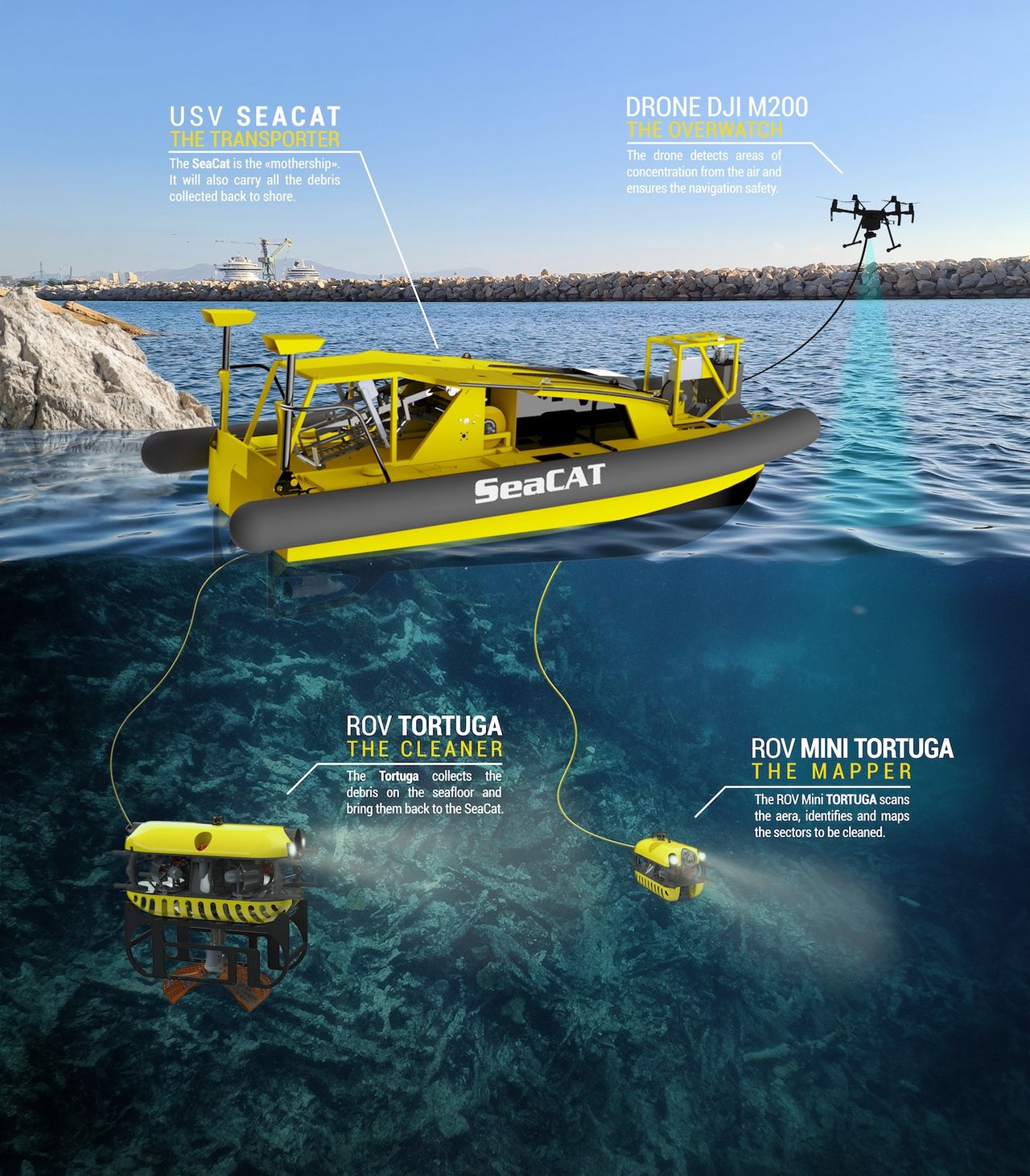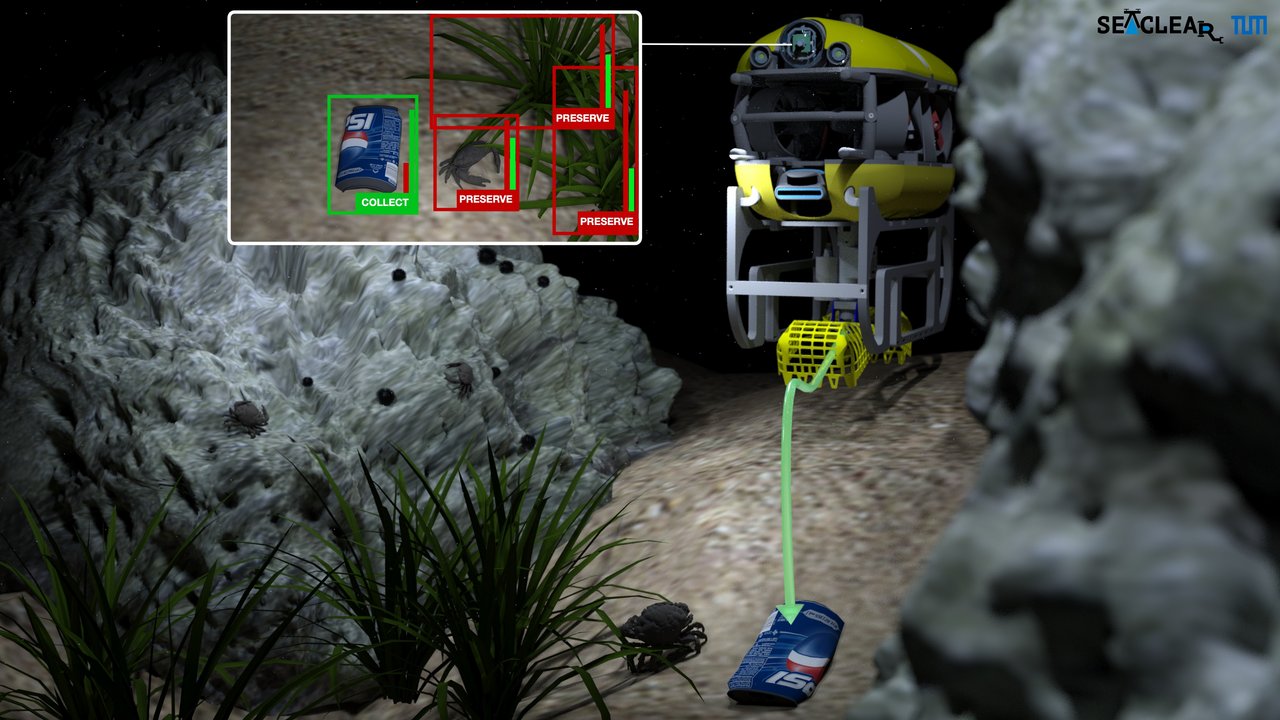SeaClear - SEarch, identificAtion and Collection of marine Litter with Autonomous Robots
Clean oceans thanks to robots and AI

Today's oceans contain 26-66 million tons of waste, with approximately 94% located on the seafloor. So far, collection efforts have focused mostly on surface waste, with only a few local efforts to gather underwater waste, always involving human divers. No solution exists that exploits autonomous robots for underwater litter collection. A team of researchers at TUM, in a consortium of eight European partners from the Netherlands, Croatia, France, Germany, and Romania are working on the development of autonomous robots for underwater littler collection.

“Oceanic waste is a pressing issue and will be for years to come. The SeaClear system is our piece of the puzzle to the recovery of the oceans. The project is really interesting because the purpose is simple, but the challenges for a robotic system are complex.”
Stefan Sosnowski

Over the past few decades, various challenges have already been addressed and explored within the robotic community. However, there is a lack of robot applications that benefit our planet, our environment, and humanity. SeaClear’s aim is to change that by creating sustainable solutions to human-created problems through autonomous robots that help our planet! SeaClear is the intersection of different domains, from multi-robot system to machine learning and vision for making robots operate autonomously in an unknown and complex environment such as the ocean. The achievements of SeaClear will not only allow people to effectively use reliable autonomous robots as an aid to the quality of their lives but will also lend a helping hand to all living beings under and over the surface.
Shahab Heshmati-alamdari

Autonomously navigating dynamic environments in any setting is a tall order, let alone in a maritime environment. From limited sensing, constrained communication to complex multi-agent dynamics (to name a few) - there is a plethora of challenges. Thus, we are given an exciting deployment target motivating the development of solutions relevant for machine autonomy.SeaClear is also about keeping our relationship with nature in check - by cleansing it of the things we have littered it with. Interestingly, many of the technological advancements we know today emerged from efforts of getting to space. But through projects like this, new advancements can help us with staying on Earth - as we do not have an alternate home just yet.
Petar Bevanda
Goal of the project
The SeaClear project will build a mixed team of unmanned underwater, surface and aerial vehicles to find and collect litter from the seabed. The project plans to use aerial vehicles to study the correlation between surface and underwater litter. The underwater vehicles will be fitted with special suction grippers for both small and large waste. The system developed will be demonstrated in two case studies: one in port cleaning (with end-user Hamburg Port Authority), and the other in a touristic area (Dubrovnik – with end-user DUNEA). Besides the two end-users, the consortium includes an SME supplying proven hardware for the platform, and four academic institutions with complementary expertise in underwater and aerial robotics, sensing, mapping, and control.
First trials
Gripper prototype
Test sites

SeaClear received €5M funding from the European Union's Horizon 2020 research and innovation programme under grant agreement No 871295.

